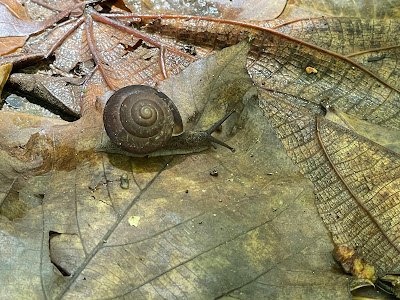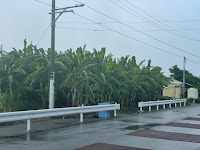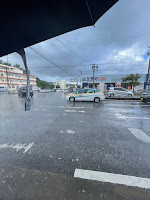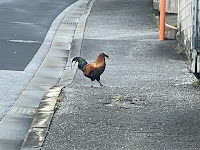When my wife and I lived in Iwakuni, one of our favorite spots was a Yamada Denki conveniently located near the Iwakuni train station. For those unfamiliar, Yamada Denki is a large electronics retailer in Japan—denki meaning "electric" or "electronics" in Japanese. The store is packed with everything from home appliances to gadgets. Anytime we found ourselves downtown with extra time, we’d roam the aisles, often walking out with at least one impulse purchase. One of our favorite finds? Studio Ghibli puzzles, which became an instant hit for us.
Currently, I’m without a vehicle, but I decided to make my way to Yamada Denki anyway. Feeling nostalgic, I checked Google Maps and thought it was only 4 kilometers from where I’m staying in the Tengan area of Uruma, Okinawa. Well, as it turns out, I had misread the map—4 kilometers was actually 4 miles. But I was determined, so I set off on the adventure, fueled by the memory of those past visits. Life lesson: pay attention to units of measure! 😭
Even before I made it off base, I stumbled upon a little friend—an Okinawan land snail crawling slowly across my path. These snails are quite common in the region, often found in moist, shaded areas. Okinawan land snails play an important role in the ecosystem by breaking down plant matter and recycling nutrients back into the soil. Their coiled shells are not just for show; they help the snails retain moisture, which is essential for surviving the humid subtropical climate of Okinawa (something that I am struggling to do). It was a small, unexpected encounter that added a touch of local wildlife to my walk.
This is a photo of the Gushikawa River, which runs through Uruma and flows directly into the Pacific Ocean.
While the water might seem brown and murky, the natural beauty of the surrounding area more than makes up for it. The lush greenery and the vibrant blue Okinawan sky create a picturesque scene that highlights Uruma’s unique blend of urban development and natural landscapes. In the background, you can see the housing towers of Camp Courtney, one of the four U.S. military bases located in Uruma, which has grown into a bustling city since its formation in 2005. The city itself is the result of a merger of Gushikawa and Ishikawa, among other towns, and is now known for its scenic coastlines, historical sites like Katsuren Castle, and the many islands just off its shore.
Uruma offers a fascinating mix of history, modern convenience, and natural beauty, making it an ideal spot for both locals and visitors to explore. This small glimpse of the Gushikawa River captures just a bit of that charm.
While walking through the Takaesu area of Uruma, I came across this house, which immediately stood out to me. Unlike most of the homes and businesses I’ve seen in Okinawa so far, this one features a more traditional Japanese-style roof. The distinct, tiled roof with its slightly curved edges and ridges is reminiscent of classic Japanese architecture, a rare sight in a city like Uruma where modern structures dominate.
Takaesu itself is an interesting area. Though it has developed residential spaces, it still retains a rural feel, with plenty of farmland visible.
As I continued walking through the Takaesu area, I noticed a lot of farmland, primarily dedicated to growing bananas and sugarcane. While some were small home gardens, likely for personal use, others were clearly large-scale operations. It was interesting to see the contrast between these small patches of cultivation and the larger expanses of farmland.Bananas, which were plentiful in the area, grow on herbaceous plants rather than trees. The proper term for a large-scale area of banana plants is a "banana plantation," rather than a grove or orchard, as you would use for fruit-bearing trees. The banana plants in Takaesu, some forming smaller clusters and others appearing in rows typical of plantation-style farming, really highlight the agricultural diversity of the region.
Sugarcane, another staple crop in Okinawa, is perfectly suited to the subtropical climate here. It's been an important agricultural product on the island for centuries, making it a common sight across Uruma’s more rural landscapes.
Sadly, this Yamada Denki didn’t have any Studio Ghibli puzzles, which was a bit disappointing. But that didn’t stop me from finding plenty of other amazing things to look at. As always, I ended up making a couple of impulse purchases—some habits never die! My main purchase, though, was a little nose hair trimmer. My wife and kids have teased me countless times about the "encroaching forest" in my nose, so I figured it was finally time to take a stand. With this little gadget, I’m ready to push back against the nasal wilderness once and for all.















